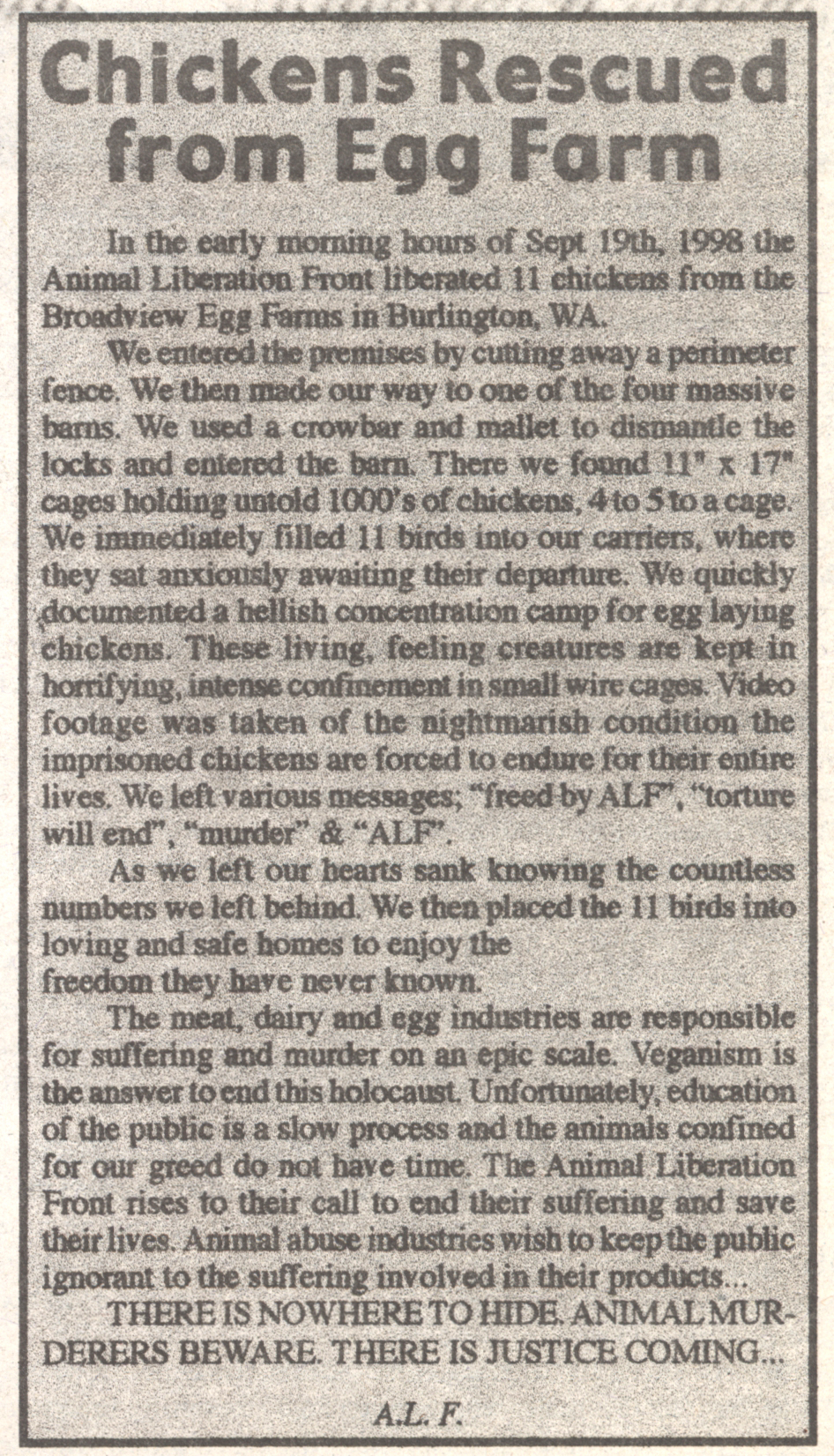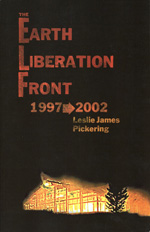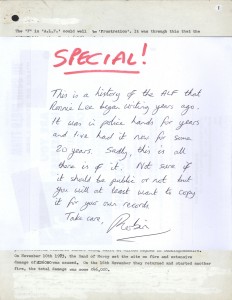From the Vaults: Broadview Egg Farm Raid
Undercover ALF video: Broadview Egg Farm (1998. Burlington, WA)
Throughout the mid to late 1990’s at least one illegal direct action happened somewhere in the United States every day. Many of these actions were somewhat futile- at least on their face. While it is true that a glued lock or a spray painted wall means very little to companies like McDonalds, it is also true that no one is born with the skill set to make revolutionary change for non-humans. We can only learn through trial and error, and gaining the confidence to undertake bigger actions often starts with something small like breaking a window.
Fortunately, actions that are unlikely to gain public sympathy aren’t the only low-risk way to build confidence and save lives. Consider, for example, egg farms. Although egg consumption in the United States is declining, battery farms are still everywhere. They are easy to find, largely unprotected, and simple to enter. The animals housed on these farms are in desperate need of liberation, and the only difficulty in doing so is finding them homes. In today’s era of urban chickens, this is getting easier. Any vegan with a back yard and the resources to buy or build simple housing could provide one of these beautiful creatures with a better life.
In 1998 one small group of people decided to raid an egg farm in Burlington, Washington. They shot a video of the action and distributed it to media outlets and supportive activists. Most of the news coverage was positive, 11 chickens were saved from a short life of misery and imprisonment, and I like to imagine that the action had a positive, skill building effect on the activists themselves.
Presented below is the video itself, along with the media statement sent by the rescuers.
Rage and Reason
Rage And Reason (First edition publication date and location unknown. AK Press edition: 1998, San Francisco, CA)
Despite assurances from Ingrid Newkirk and Steven Seagal to the contrary, this book just isn’t all that good. Marketed as an animal rights revenge novel (complete with former Special Forces commandos skinning furriers) Rage and Reason was banned in some countries upon its initial release. The hype over these bans fueled great curiosity among those of us in North America who were having a difficult time obtaining a copy. In 1998 AK Press produced a new edition which immediately landed with a dull thud in the movement. We all bought and read R&R at the same time, and a few days later one could feel the collective disappointment.
I will not ruin the “surprise” for those of you have have yet to read the book, but… well, shit. Let’s just say that if you find yourself enjoying the story, brace yourself for the cop out coming in the final pages. Also: non-vegan protagonists in an animal liberation murder story? Yeah, they’ve got the dedication to risk life sentences for beheading CEO’s of agri-businesses, but they just can’t stop eating yogurt! Pfft!
Earth Liberation Front 97-02
Earth Liberation Front 1997-2002 (2003. Second printing with new dedication and layout 2007. Portland, OR)
Leslie James Pickering grew up in Buffalo, NY. In the mid 90s he became involved in the local hardcore music scene. While attending shows in the surrounding area, he began reading the literature distributed there by local animal rights groups. Zines such as Holocaust (published by Animal Defense League founder Kris Qua) were his introduction to radical politics and support for underground direct action.
Like most kids who grow up in smaller cities, Leslie James left Buffalo as soon as he had the means. After a brief stint skateboarding in San Francisco (during which time he filmed for the underground skate video rarity “Heat Zone”) Pickering landed in Portland, OR. There, he met Craig Rosebraugh, and after a few years the two of them began publishing a newspaper called Resistance with other members of a group called Liberation Collective. At this same time, a group calling themselves the Earth Liberation Front began a series of arson attacks against companies involved in logging and other environmentally harmful practices. They sent their first media statement to Liberation Collective, and the rest of the story is what Pickering documents in Earth Liberation Front 97-02.
Consisting of reprints, interviews, and some original material, Earth Liberation Front 97-02 is a must read for those who wish to understand the beginnings of the Green Scare.
Hidden Crimes
Hidden Crimes (1986. Pasadena, CA)
The animal liberation movement has seen some bewildering strategies come and go over the years. One of the weirdest was the idea that animals should be removed altogether from the vivisection debate. As far back as the 1970s there were groups and individuals who insisted (often with religious zeal) that the issue with animal experimentation was one of scientific fraud, and that humans were too selfish to care about animals. These anti-vivisectionists thought that if the general public could be convinced that vivisection did not work, people would be outraged by the waste of their tax dollars and would demand that the practice ended.
The idea that the public would revolt if they saw their tax dollars wasted on “scientific fraud” is absurd. How many people living in the United States are already aware of ways in which their tax dollars are abused and how many are rioting as a result? How many of those involved in the fight against vivisection would fight with the same force for money instead of lives? Furthermore, since this who strategy relied on the idea that “Vivisection is Scientific Fraud,” what percentage of the public is qualified to debate science with scientists? Finally, if vivisection were to be defeated using this strategy, where does that leave animals killed for fur, food, and entertainment? Were they to be abandoned since the selfishness of humanity is all we had to appeal to?
Despite these obvious weaknesses in their argument, groups like SUPRESS, and their founder Javier Burgos, made several documentaries promoting the idea. The first by SUPRESS was called “Hidden Crimes,” and despite its message that fraud is more of an issue than animals, graphic imagery of animals being mutilated is prominent throughout the film. Much of this footage was obtained by the Animal Liberation Front, who notably fight vivisection because of their concern for non-humans, rather than bad science or mis-spent tax dollars.
Hidden Crimes promised to be the start of a new movement which would swiftly abolish vivisection. If failed to keep that promise, but for all of its faults, it was seen by tens of thousands of people upon its release and remains an important part of our movements history.
The Vegan News #1
The Vegan News #1 (1944, Leicester, England)
Seventy years ago an ethical vegetarian named Donald Watson began to see the problems inherent in consuming milk and eggs. The prevailing wisdom at the time was that a human could not be healthy without those products, so Watson attempted an experiment. He altered his diet to be entirely plant based and found the results to be encouraging. Soon after he coined the word “vegan” and started the first Vegan Society. In 1944, with a membership of twenty five, they released their first newsletter.
The relevance of this document to animal liberationists can not be understated. While Donald Watson was not among those carrying on anti-vivisection or blood sports work in the 1940s, his vision of a human culture that could live without the products of cruelty laid the foundation for all the work that has come since. Without the hypocrisy inherent in defending one species while exploiting another, new realms of possibility opened up for philosophy and action in our relationship with non-humans.
The inaugural issue of The Vegan News makes for an interesting read. Many of the arguments inside could be pulled straight out of today’s Facebook debates. However, because of the work of those first 25 members of the vegan society, these discussions are now being lead by hundreds of thousands of vegans, and eventually will be made by tens of millions of us. It all started with this hand typed, self published newsletter made almost seven decades ago.
Special thanks to Ryan Shapiro for sharing this document with us.
The raw stuff of history: An incomplete, unfinished Ronnie Lee manuscript.
Unfinished Manuscript (Early to mid 1980s, England)
A few months ago we contacted our friend Robin Webb to borrow some of his animal liberation publications for scanning. Robin cheerily agreed to send us a package, and when it arrived it included some of the rarest publications we have yet received. We gingerly pulled one gem after another from the box, and just when we thought we couldn’t be more excited we found this unfinished history of the ALF written by Ronnie Lee.
Drafted almost thirty years ago, this publication spent decades in police custody before ending up in the possession of the ALF Press Office. After its trip through the evidence room the manuscript is missing over a hundred pages, but still bristles with history.
We are still investigating the story behind this document, but felt it would be unfair to our readers to keep it out of circulation any longer. Here, distributed to the public for the first time, is the story of the Animal Liberation Front as told by one its founders.
Green Rage
Green Rage: Radical environmentalism and the unmaking of civilization (1990, Boston, MA.)
One of the first books I bought about radical wilderness defense was Green Rage. It is an excellent investigation of the origins of (western) environmental radicalism, and I recommend that you read it cover to cover.
Speaking of covers, you might notice that this particular copy of Green Rage is a little ragged. The reason for that is because this is my copy, and after reading the book I took it’s message to heart. Several years ago in Oregon, a small group of activists from around the region were protesting at a breeding facility that supplied rabbits to the vivisection industry. When we arrived the farms owners were not present, and neither were any law enforcement. Not coincidentally I quickly found myself living with some critters who liked to chew on everything in our humble home. I hope you will enjoy Green Rage as much as they did!
Breaking Barriers
Breaking Barriers (1986. Washington, D.C.)
While it is true that direct action is often the best means to accomplish our goals, the way we conduct those actions can be an impediment to long term change. Early militants in the animal liberation movement were inspired by the aesthetics of groups like The Angry Brigade, and we have been saddled with that sort of ski-mask and army jacket imagery ever since. The problem is this: that appearance is heavily associated with anti-social behavior, crime, and random violence. While we may romanticize the bolt cutters and balaclavas, the general public does not. If our fashion sense harms the propaganda and recruitment value of our actions, than perhaps we need a makeover.
There have been efforts to part with the bank-robber-meets-gun-nut costumes, however. One of the most dramatic involved a spectacular raid, and… um… mime masks. This attempt at softening the imagery of underground activism was carried out by the aptly named “True Friends.” The video below, Breaking Barriers, was produced by PeTA in their more radical days, and acted to publicize the liberation of four baby chimpanzees from isolation chambers at the SEMA lab in Rockville, MD. While the effectiveness of their eerie masks and wigs is questionable, the beauty of these young primates being freed from a life of torture is not. This was a notable raid that garnered considerable public sympathy when it occurred, and just because the attempt at re-inventing our look failed in this instance doesn’t mean we shouldn’t keep trying.
Facklan
Facklan (1996-1997 Umea, Sweden)
(Editors note: Facklan is a Swedish language publication that we bring to you due to its historical significance. Umea, Sweden produced one of the most remarkable animal liberation communities of the 1990s. Their influence was so strong that politicians in Sweden stated in national media that they feared animal rightists may collapse the countries infrastructure, both through sabotage and the conversion of the nations youth to veganism. Facklan was produced during the infancy of this tiny, but formidable uprising. One of our readers from Sweden has offered the summary that follows.)
Facklan (The Torch) was a Swedish magazine supporting the A.L.F. and
other radical groups fighting for the animals. It was released in four
issues in 1996-1997, during the biggest peak of A.L.F. activity in the
1990:ies in Sweden. The magazine was based in the northern city Umea,
which was well known for it’s number of vegans and animal rights
activists, militant (all fur shops closed in Umea as a result of the
A.L.F.) as well as non militant (almost 50 percent of the students at
some schools were vegetarians). Umea was often referred to as the
“Vegan Mecca”, and was also well known for bands promoting the animal
rights message, such as Refused.
The first issue contained translated interviews etc from mainly UK and
US sources, and also had copied text from the Swedish militant
activist/anarchist manual Lila Svarta. Of course there was also a
diary of actions and addresses to imprisoned animal rights activists.
Two spreads were also dedicated to show mainstream media articles from
the time, also serving as a sign of the impact of the A.L.F. activity.
During the later issues, more of the content was produced by Swedish
authors. In the second issue, there were a lot of more news from
Sweden and Finland, letters to the editor, communiques from the newly
started group The Wild Minks, a report from the riot against the fur
auction in Skara, a piece on the repression of Umea acitivists,
reviews of records under the headline “Activist Core”, and now also a
diary of actions focusing on Sweden. Content from abroad was still
used though, this time information from The Final Nail and on Barry
Horne. On the last page, a summary in English was also published for
the foreign readers.
The third issue contained an exclusive interview with The Wild Minks,
the group that got most feared among the fur farmers, for liberating
minks and setting fire to properties of the fur industry. An address
list to all Swedish fur farms was published together with slogans such
as “What are you waiting for?”. There were critical articles directed
to hardcore posers, as well as articles about how animals that had
been liberated were doing in their new homes.
The fourth and the last issue contained more articles like “How the
Raid was Done” – often raids that the police had said were so
professional it had to have been carried out by professionals from
abroad… One person urges for a Swedish A.L.F. Supporters Group, and
a spokesperson who could defend the actions openly. Til now, this had
only been done my anonymous activists in balaclavas, or by Emelie
E:son, an anonymous A.L.F. activist from the 1980:ies. Focus was also
targeted on groups trying to attack Peter Singer (who was at a visit
in Sweden during this period), there was a big report from the animal
rights campaigning and activity against the vivisection at the Umea
University, as well as more information directly from The Wild Minks.
After the last issue, a Swedish A.L.F. Supporters Group was founded,
doing both work towards the media as towards prisoners and the animal
rights movement in general. They also released their own magazine,
later named Befriaren (The Liberator).
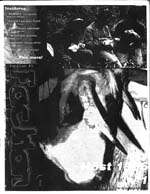

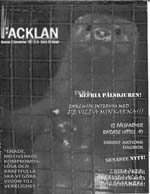

More SHAC USA newsletters
SHAC USA Volume 2, issues 2 and 4 (2002, Philadelphia, PA)
It is hard to describe the feeling of constant elation that I had working on the campaign against Huntingdon Life Sciences. After years of grassroots organizing it seemed that the movement was finally moving forward with speed and determination. News constantly poured in from all corners of the globe that a new target had been chosen- and eliminated. Everyone participating was energized, hopeful, and on the attack.
One of the reasons that so many people were inspired to take action against HLS was the SHAC USA newsletter. Each issue featured the groundbreaking graphic design work of Jake Conroy. His layouts and other artistry made each copy a pleasure to behold, and also left other organizations scrambling to improve the designs of their own publications. If you doubt that a periodical could prompt someone to pickup a sign, bullhorn, or brick, than you feel very different than the US Government. They were so threatened by Conroy’s print and web work that he was indicted in the SHAC 7 case, and received one of the longest sentences of all of the defendants.
These two issues of the newsletter date from 2002, which was an exciting time in the campaign. After Stephens Inc. had capitulated, thousands of people suddenly had faith that they could, in fact, change the world. We all knew that we were a part of something special, and I think that comes across in the text and imagery of of these two movement gems. Sure, we were cocky, our rhetoric sometimes went too far, and we weren’t always as organized or prepared as we claimed- but we walked our talk to the best of our ability and our efforts took the movement far.


DISCLAIMER: animal liberationist is an online archive preserving the history of protest movements for animal rights and environmentalism. Its owners, contributors, and designers are not responsible for actions taken by third parties which may be harmful or unlawful to the individuals or entities named in archived publications. This web site is provided for the purpose of historical research and analysis, and is not intended to incite, encourage, or condone any criminal action on the part of its readers. All opinions expressed in our archives are those of their original authors only.


